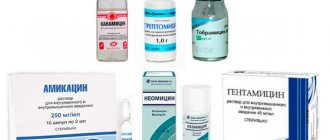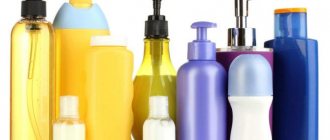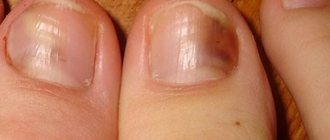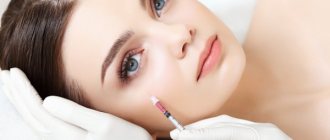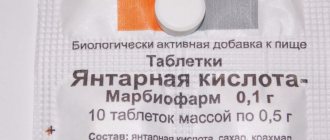In what cases are non-hormonal drugs used?
Drugs in this category have almost no contraindications and can be used for a long time. Among the most effective are the following:
- panthenol-containing – moisturize the skin, promote the healing of microcracks and minor damage;
- lanolin-containing – soften the skin, relieve pain and irritation;
- retinol-containing – stimulate skin regeneration processes;
- ointments containing local antihistamines are prescribed for insect bites and severe skin irritation.
Keywords:
dandruff, seborrheic dermatitis, fungi. Malassezia, Naftalan oil, Naftaderm® shampoo
The problem of oily hair and often associated dandruff is familiar to many young men and women. The skin of the scalp becomes oily, the hair sticks together, becoming saturated with sebum and giving it an unkempt appearance. Scales or dense gray-yellow crusts may form on the scalp. This process is associated with increased work of the sebaceous glands, desquamation of epidermal cells of the scalp and is called dandruff (D), which is classified as a mild form of seborrheic dermatitis (SD) (see figure). More severe manifestations of this process are characterized by erythematous spots and plaques that are covered with mealy or sebaceous scales.
Rice.
Seborrheic dermatitis of the scalp.
The process can move from the scalp to smooth skin (“seborrheic crown”), and then the behind-the-ear areas, skin of the ear canals, face, chest and back are affected. Skin changes may be accompanied by itching and burning. Increased desquamation and inflammation of the scalp can have an adverse effect on the condition of the hair follicles and hair shaft. When comparing the hair of people with P/SD, it was found that with P/SD, the hair is thin, has a more fragile structure and is less shiny. P/SD may also be accompanied by increased hair loss.
Dandruff (D) and seborrheic dermatitis (SD) are common pathologies of the human scalp. Currently, these conditions are considered as manifestations of dermatosis, which have varying degrees of severity. The incidence of simple dandruff is, according to various sources, from 20 to 50%. Seborrheic dermatitis, a severe form of this dermatosis, occurs in 2-5% of people of all ages, with a peak incidence between 15-25 years and after 40. Men are more likely than women to be affected by this disease and have more widespread and extensive rashes. P/SD accounts for 10% of all cases of visits to a dermatologist.
The disease usually begins during puberty, correlating with an increase in the activity of the sebaceous glands and the concentration of testosterone in the blood. Predisposing factors of the disease can also include: increased sebum secretion, hormonal and endocrine disorders, immunosuppression, gastrointestinal pathology and emotional overload. Dermatosis is common in patients with Parkinson's disease and in patients receiving certain psychotropic drugs such as haloperidol, decanoate, lithium, buspirone, chlorpromazine and chlorpromazine. DM is one of the common skin pathologies in individuals infected with the human immunodeficiency virus. The disease often worsens in winter due to dry indoor air.
Seborrheic dermatitis
– a chronic recurrent skin disease associated with increased secretion of sebum and changes in its qualitative composition.
The development of the disease is facilitated by the activation of fungi of the genus Malassezia, which were described in 1874 by Malassez. In his honor, this genus of mushrooms got its name. It is known that fungi of the genus Malassezia are found in the skin microflora of approximately 90% of the population. According to their classification, they belong to saprophytic, lipokeratophilic, yeast-like fungi, and basidiomycetes. Among the fungi of the genus Malassezia, the species Malassezia globosa, Malassezia restricta, Malassezia furfur and others are most often involved in the occurrence of diabetes. In most cases, they affect the middle and superficial parts of the stratum corneum and hair follicles. It is known that changes in the chemical composition of sebum (decreased squalene/triglycerides ratio) contribute to hypercolonization of the skin by yeast-like fungi and their transition to a pathogenic mycelial form.
Genetic studies have made it possible to accurately identify the microflora component in diabetes, which makes it possible to take a new look at the pathogenetic basis of this disease. Malassezia globosa and Malassezia restrict have been identified as species predominant on the scalp of people with diabetes. It has been established that in patients with diabetes Malassezia globosa and Malassezia restricta predominate - 44-66%, and Malassezia furfur accounts for only 11% in such patients.
With P/SD, changes occur in the skin barrier and epidermal lipids. In patients with P/DM, a significant decrease in the content of keratin types 1, 10 and 11 was revealed, which indicates incomplete terminal differentiation of cells. Quantitative determination of epidermal intercellular lipids revealed a decrease in the total content of ceramides and sphingobases, which is one of the reasons for the violation of the barrier function of the skin. The characteristic layered structure formed by ceramides is replaced by a much broader unstructured lipid substance. Sebaceous lipids are modified by lipase secreted by Malassezia to form free fatty acids. They, in turn, are the basis for lipid peroxidation products - the main factors that provoke inflammation.
A pronounced cosmetic defect in exposed skin areas in the face, scalp and itching cause in patients with P/DS, in addition to physical suffering, psychological discomfort and emotional distress. They often develop social maladjustment, have difficulties in professional, family and sexual relationships, and develop psychosomatic disorders of the anxiety and depressive spectrum. Therefore, adequate treatment of seborrheic dermatitis is an urgent task for dermatologists.
External treatment of diabetes is aimed at relieving acute inflammation and itching, normalizing the activity of the sebaceous glands, the processes of desquamation and sebum secretion, and reducing the colonization of Malassezia fungi. Therapy for P/SD of the scalp includes the use of external agents with different mechanisms of action: antifungal, anti-inflammatory, keratolytic, and those with a complex effect.
In terms of ease of use, shampoos are in greatest demand among patients. Recently, a new Naftaderm® shampoo has appeared in the line of antiseborrheic products, which has the unique healing properties of a natural composition - naftalan oil. It is a complex natural mixture that includes aromatic hydrocarbons, naphthenic acids, nitrogenous bases, trace elements (zinc, boron, manganese, iodine, bromine, lithium, cobalt, copper, rubidium, molybdenum, etc.) and mineral oils.
In 1898, the Moscow Dermatological Society recognized as successful the results of the work of the famous Russian dermatologist, founder of the Moscow school of dermatovenerologists A.I. Pospelov, published in the journal “Doctor”. He used Naftalan oil in the treatment of a number of dermatoses: psoriasis, eczema, neurodermatitis, seborrhea and pyoderma. Dermatologists of many generations have successfully used Rosenthal's liquid - an alcoholic extract of naphthalan oil - to treat dandruff and seborrheic dermatitis, and prescriptions for various ointments and pastes containing naphthalan are still actively used in dermatological practice.
For the production of Naftaderm® shampoo, pharmacopoeial quality oil is used, obtained by alcohol extraction of naftalan oil, purified from bacterial contamination.
Shampoo composition:
water, sodium laureth sulfate, sodium C14-C16 olefin sulfonate, lauryl betaine, polysorbate 80, naphthalan oil extract, sodium chloride, phenoxyethanol, glyceryl laurate.
Studies on laboratory animals conducted by Retinoids JSC have shown that applying products containing naftalan oil to areas of the skin rich in sebaceous glands for a month significantly reduces their number, size and functional activity.
The use of Naftaderm® shampoo in patients with P/DM reduces the activity of the sebaceous glands, normalizes the oiliness of the scalp, adjusting its physiological pH. The shampoo effectively reduces itching and flaking and eliminates discomfort. The effectiveness of the shampoo in the treatment of dandruff and seborrheic dermatitis has been confirmed by clinical observations.
Naftaderm® shampoo is applied to damp hair with lightly massaging movements to the skin for 3-5 minutes, and then thoroughly rinsed with warm water. If necessary, the procedure can be repeated. It is recommended to use it twice a week. Washing more frequently can damage your hair and dry out your skin. The recommended course of treatment lasts 2 months. In the future, to prevent exacerbations, you can use shampoo once a week or 2 times a month.
According to patient reviews, the effect of treatment is observed after 1-2 weeks from the start of use. Dandruff and itching are significantly reduced. The skin becomes less oily, the hair does not stick together and looks neater and shiny. Using Naftaderm® shampoo for 1.5-2 months allowed most patients to completely cope with oily skin and dandruff. The product is non-addictive, hypoallergenic and does not cause side effects.
Author:
Belousova T. A. Edited by: Kalinina O. V.
Print
Who are hormonal medications indicated for?
Ointments containing corticosteroid hormones are prescribed in allergy clinics only according to strict indications. Penetrating into the blood, the substances inhibit the function of the adrenal glands. Even new generation drugs, in which side effects are minimized, lead to dryness, thinning and atrophy of the skin, active hair growth, the appearance of stretch marks and acne. They can be used for up to 10-12 weeks for adults and no more than 3-4 weeks for children.
Most often prescribed:
- flucinar - a glucocorticoid in the form of an ointment or gel to relieve inflammation in urticaria;
- hydrocortisone ointment - for eczema, psoriasis, dermatitis;
- advantan - especially effective for weeping allergic dermatitis, including among children from 4 months;
- elocom is a new generation drug that has virtually no systemic side effects.
Along with mono-drugs, there are also combination drugs, which include corticosteroids, antifungal and antibacterial agents. They are prescribed for secondary infection or when the risk of complications is high. Due to the wide variety of remedies, you should not self-medicate local manifestations of allergies: many drugs are not as harmless as they might seem. In addition, local treatment will only be effective in combination with systemic treatment - against the backdrop of hypoallergenic living conditions.
Seborrheic dermatitis - causes
There may be several reasons why a person develops seborrheic eczema:
- hormonal disorders;
- genetic predisposition;
- frequent stress and depression;
- psycho-emotional overload;
- general decrease in immunity.
Let's consider several more factors that determine the development of the disease. For example, Malassezia mushrooms. The peculiarity of this type of mushroom is the need to reproduce and live in a fatty nutrient medium. It is for this reason that they parasitize in the upper layers of human skin, where the sebaceous glands are located.
It is worth noting that with HIV infections and AIDS, seborrheic dermatitis is often a complication and can serve as the first sign of immunodeficiency.
Symptoms of seborrhea include:
- various rashes of different sizes and irregular round shapes;
- redness;
- dryness, flaking;
- moderate itching.
Advantages
Smart medicine for smart people
Safe, effective and natural rejuvenation
The best technologies for communicating with patients
We don't just take care of your beauty - we recharge you!
The localization of dermatitis on the scalp shows us that hair thinning is possible, and subsequently alopecia (partial or complete hair loss). Symptoms of alopecia include:
- partial hair thinning;
- during manipulation and combing, intense hair loss is observed;
- the appearance of round-shaped lesions without hair.
Seborrhea of the scalp, depending on the nature of the manifestation of the pathological process, is divided into 3 types. Let's look at each of them. The first type is oily seborrhea of the scalp. This type is associated with intense work of the sebaceous glands and impaired outflow. Depending on the chemical composition of the sebaceous secretion, oily seborrhea is divided into two forms: thick and liquid. In its thick form, sebum has a viscous consistency. This form is accompanied by severe itching of the scalp, often complicated by inflammation.
GLUCOCORTICOID DRUGS
Toolkit
| Content | ||
| Preface Introduction Pharmacodynamics Pharmacokinetics | Adverse reactions General indications for use Contraindications Characteristics of drugs | Principles of long-term therapy Chronotherapeutic approach Alternating therapy Pulse therapy |
| Peculiarities of use in certain diseases Peculiarities of use in pregnant and lactating women Local application Inhalation administration Intra- and periarticular administration | Application in dermatology Application in ophthalmology and otorhinolaryngology References | |
